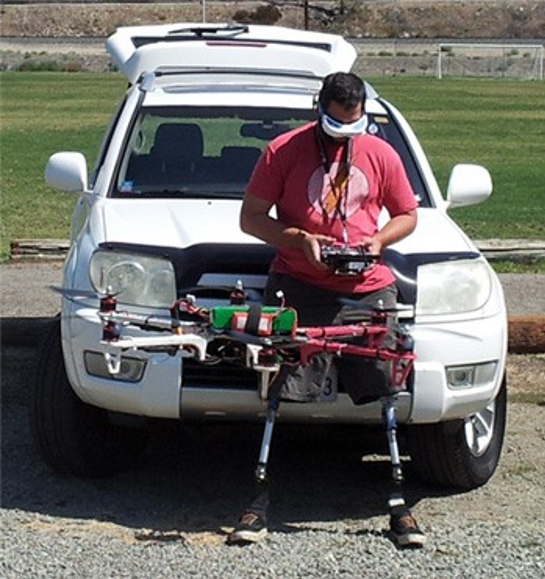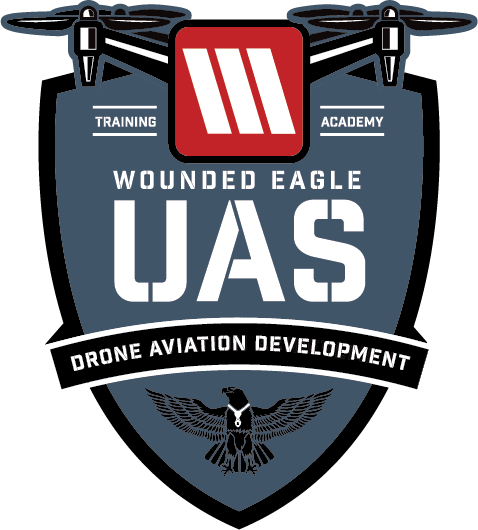Therapy Drones: Could sUAS Be the Adaptive Therapy Tool of the Future?

Here’s a new category for the drone industry: therapy drones. Could learning to pilot a sUAS be a new and effective form of adaptive therapy? Joseph Dorando, founder of the Wounded Eagle project, says that the benefits of learning to pilot a drone can’t be underestimated – and urges the medical profession to learn more.
The following is a guest post by Joseph Dorando, U.S. N veteran, Part 107 pilot and CEO of Wounded Eagle UAS, a non-profit organization for wounded veterans. DRONELIFE neither accepts nor makes payment for guest posts.
Over the many years that I’ve been training disabled veterans into becoming small unmanned aerial systems (sUAS) commercial (FAA Part 107) operators with Wounded Eagle UAS, it’s come to my attention that there is an amazing therapy treatment that physical therapists and those in the medical community are unaware of. A therapy treatment that strengthens/teaches eye and hand co-ordination, spatial thinking, muscle training and memory, dexterity, concentration, focus, and attention span along with providing employment and enhanced social enabling skills.
Almost all of my students have told me that flying sUAS was something they not only enjoyed, but that it had become a form of therapy for them that they looked forward to. They enjoyed coming out to the field gaining more time in flight training operations. As they progressed in their flight skills, I would introduce them to flying via First Person View (FPV) and one of their comments was “it was like an out of body experience”. This isn’t some video game, this is real world!
If ever there was a validation, this was it.
Therapy Drones – for a Wide Variety of Challenges
Physical and mental issues such as Traumatic Brain Injuries (TBI), Post-Traumatic Stress Disorder (PTSD) and other neurological disorders and cognitive disabilities are difficult issues to cope or deal with. Has anyone (besides me) thought about the therapeutic benefits of operating an sUAS along with FPV, and what enjoyment this could bring to patients and their treatment regimen?
Think about it. Talk to any pilot and have them tell you about their joy of flight and they’ll tell you there is no other experience like it. With a small unmanned aerial vehicle (sUAV) equipped with FPV and a head-tracking camera, you are able to take someone confined to a wheelchair and transform that chair into a pilot seat. You’re flying through a giant TV screen that you saw aboard the USS Enterprise in Star Trek. Image soaring above the hills and valleys viewing in any and all directions, or over and through the trees in a challenging course. These are just some of the skills and aspects pilots can acquire, develop and enjoy -all while receiving therapy treatment!
An example of one of the current therapies in practice with disabled veterans is “tying a fly” for tap water fishing. Not that I have anything against my fellow fishermen who enjoy lakes and streams (I’m more of a tuna/yellowtail guy personally, and maybe a bit snobbish about it), but how often will they be able to go fly fishing as opposed to flying an FPV racer that can pop a “maximum” speed of 100mph and turn on a dime? And they could use their drone to troll lures around the lake for fishing (streams may be more problematic). (Note, per FAA regulations, no sUAS should travel over 100mph.)
sUAS come in many flavors and sizes, and camera transmitters have become even smaller. There are 2 popular FPV drone sizes called micro drones that are as small as 65mm and 75mm with a 25mWatt camera transmitter that you can operate safely indoors. You could mount a more powerful camera transmitter to a fixed wing aircraft or multirotor and fly all over the place. If you have an extra set of goggles, you can take someone along in the “jump seat”. This is a 21st century treatment or tool for the therapist to have in their toolbox (or toy box).
From my anecdotal experience, I believe therapists are missing a golden opportunity to discover another practical use for sUAS with the treatment of a variety of physical and mental disabilities. I’m reaching out to the medical community to explore the various treatment capabilities and possibilities of using sUAS in their practice and what this could bring to their patients. Image the difference this could make in their quality of life and standard of living.
